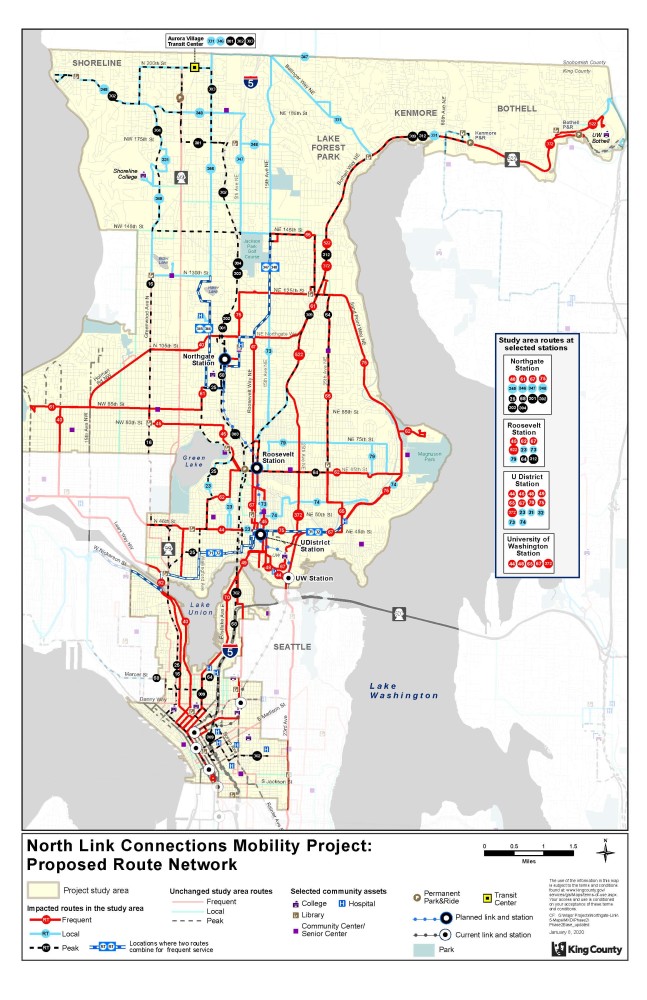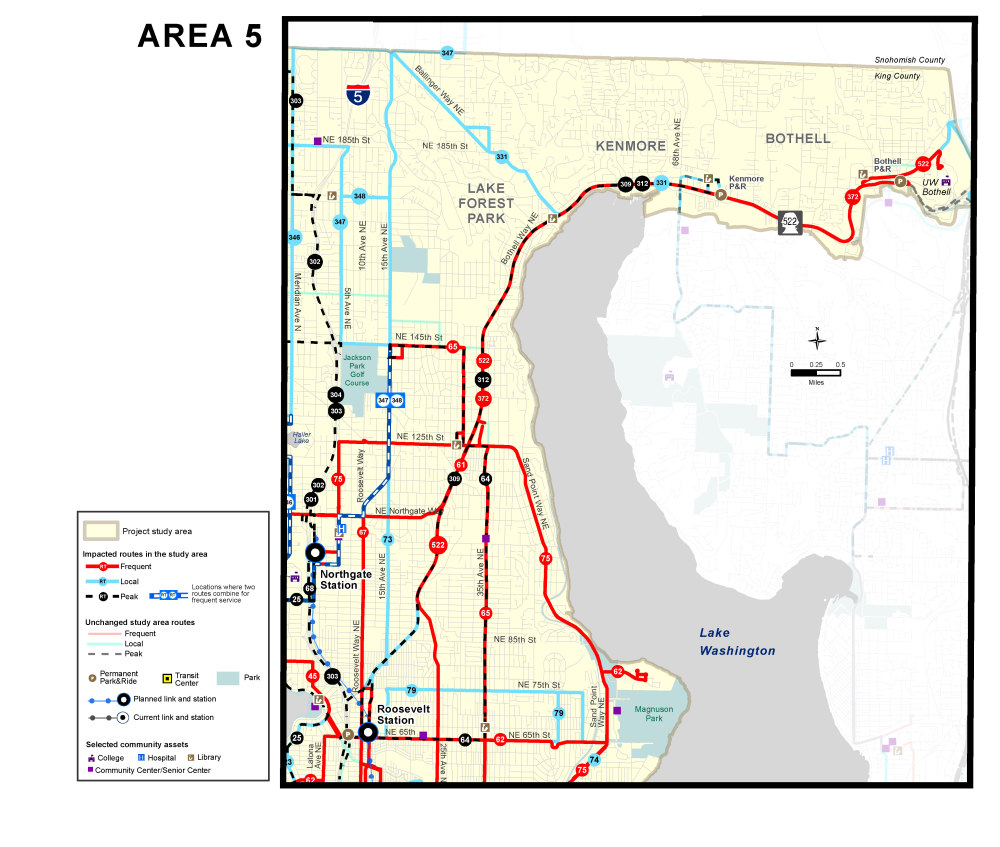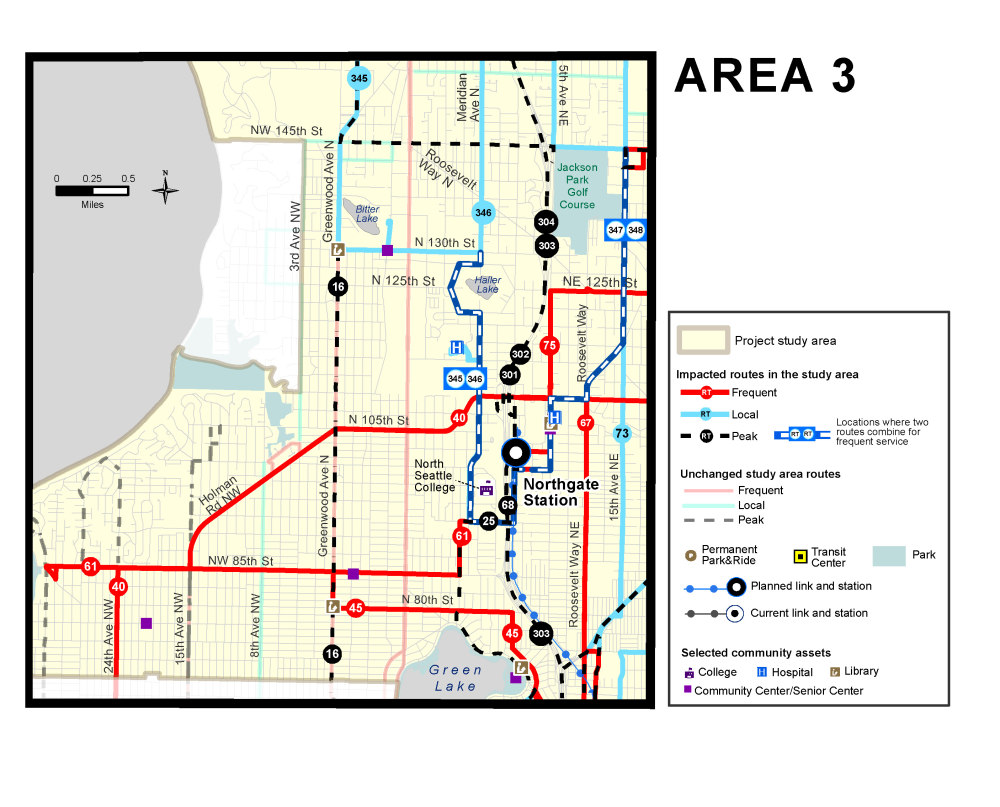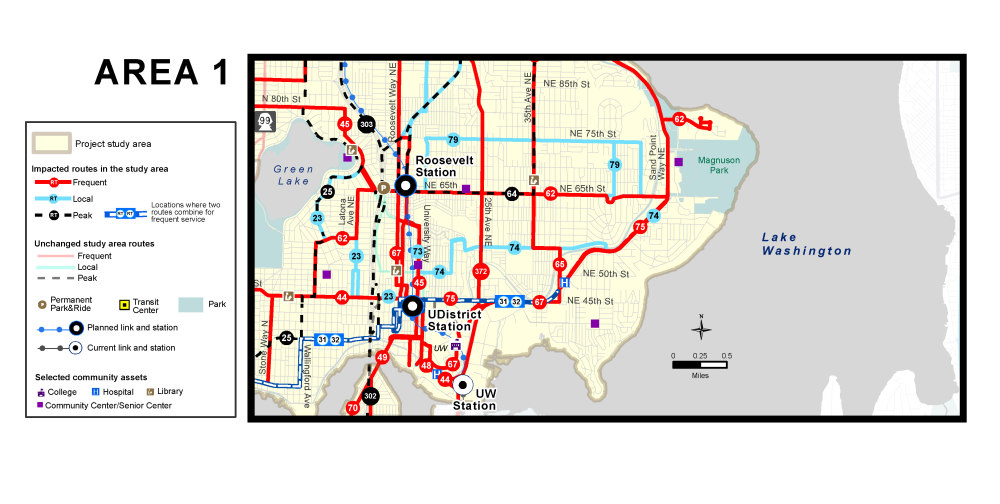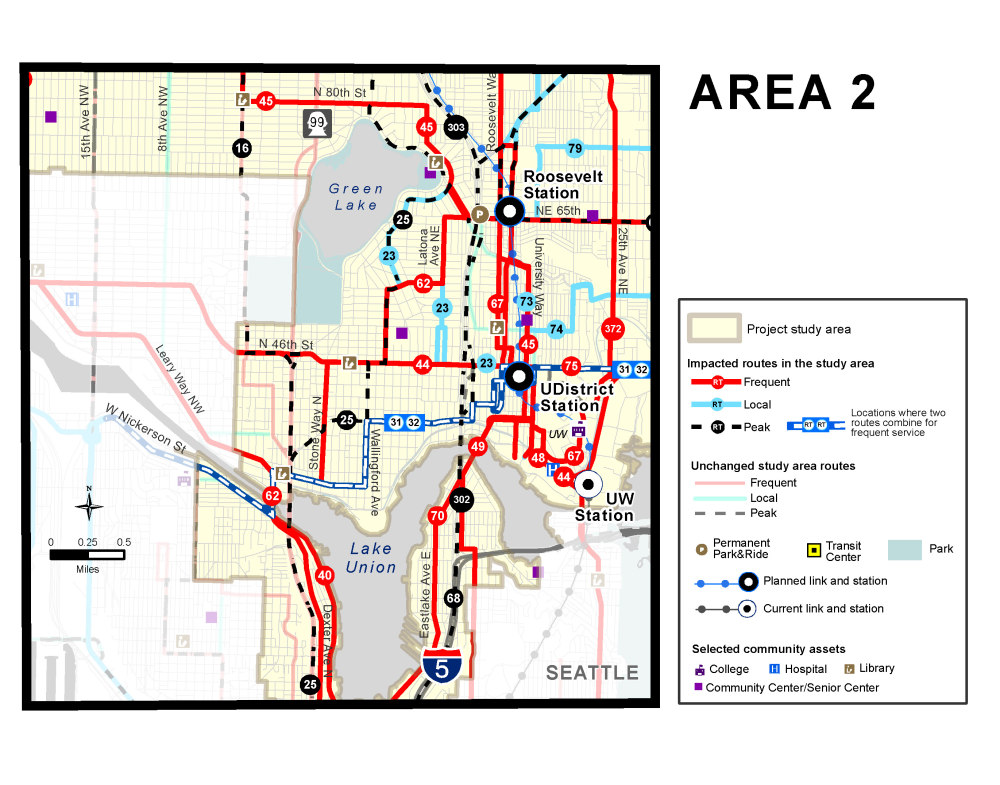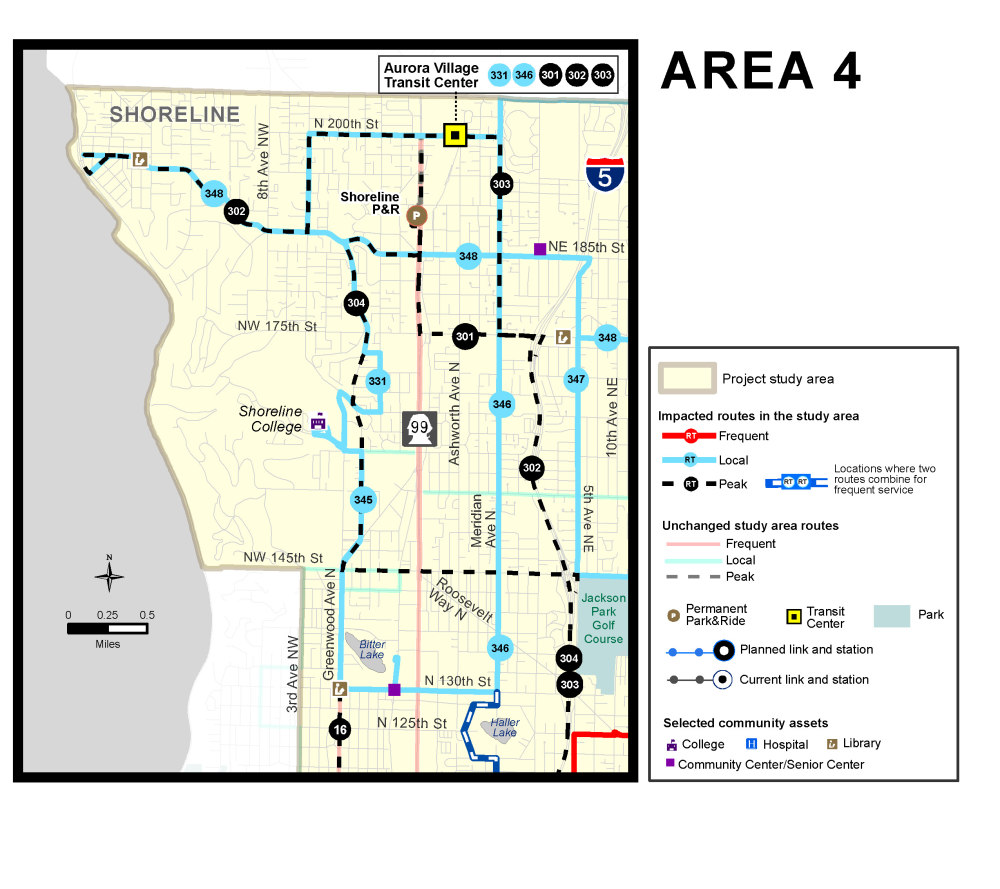Thank you to the approximately 400 people who shared their thoughts with us during the first phase of our engagement. Their feedback helped us better understand the mobility needs and priorities in north King County.
From what we heard, when Link light rail begins to the U District, Roosevelt, and Northgate stations and Metro considers changes to bus service, it’s important that:
- East-west connections are improved to move people across town.
- Door-to-door travel time is either faster or similar to trips made by bus today.
- Connections to hospitals and medical facilities like Seattle Children’s Hospital, the University of Washington Medical Center, and facilities on First Hill are improved.
- Connections to new markets like South Lake Union are improved.
- Transfers from bus-to bus and bus-to-Link light rail are easy to understand and easy to do.
Below is a map of how the buses in this project currently move in and out of the area. This is our current network of service.
Based on the feedback from the community and the guidance from our Mobility Board, this is the map of the proposed ideas for how buses could move in and out of the area when the UDistrict, Roosevelt, and Northgate Station Link light rail stations open to meet the needs identified by the community in the first phase of engagement.
Let’s look at the major ideas more closely:
1. Directing Lake City, ST-522, and Maple Leaf service to Roosevelt Station
What this means:
This change would improve existing express service to South Lake Union and First Hill by adding additional trips earlier and later during commute hours. By directing routes 312 and ST 522 to the Roosevelt Station, we have additional resources we can add to the ST 522 service. The shorter more reliable bus routes would enable them to come more often in the middle of the day, evening, and on weekends. Route ST 522 would also run more often from Seattle in the morning and to Seattle during the evening (reverse commute), which will offer new travel opportunities to riders.
Trade off:
By removing service that is currently on 5th Ave NE in Maple Leaf we are able to better serve the ST 522 area and improve connections to the Roosevelt station area through other services. Some people may have to take a bus and the Link light rail to get to Downtown Seattle. It may take slightly longer to get to downtown Seattle when transferring to light rail when traffic is light, but the trip will be much faster and more reliable when transferring during the rush hours.
2. East to West service connects at Northgate Station
What this means:
By removing duplicate service that is serving the same north-south destinations as the Link light rail, we can provide new service connecting neighborhoods east and west of Northgate to Northgate Station.
Trade off:
The result of this proposed idea would mean less north-south bus service in the north Green Lake area, and that riders traveling to the south end of Downtown Seattle may experience a more reliable but longer overall travel time.
3. Buses to/from Northeast Seattle connect at Roosevelt Station and University District Station
What this means:
This proposed change would create new and improve existing east-west connections by changing the paths of buses to run all day and have more direct connection to the Roosevelt and University District Link light rail stations.
Trade off:
This proposed change would result in less service through the center of UW, but new service along NE 45th street and University of Washington northern edge of campus. By shifting bus resources from routes that duplicate Link and other bus routes we will be able to provide new and improved connections to Link. We are also balancing service to University of Washington with people seeking to connect to light rail and other local area destinations, including the U District.
4. Buses to/from Wallingford and Green Lake neighborhoods would connect at Roosevelt Station and University District Station
What this means: This proposed change would improve connections on the west side of Interstate 5 with Link light rail station at Roosevelt and in the University District. We are able to do this by adjusting he amount of service operating to Downtown Seattle via Aurora.
Trade off: By concentrating service on one street area, this will generally increase service but will result in less service on other roads. This will result in improved connections to Roosevelt, NE Seattle and U. District but might reduce service connections to the Aurora corridor.
5. Buses from Shoreline and North Seattle that currently go to downtown Seattle are directed instead to Northgate Station:
What this means:
This change would improve travel times to and from Downtown Seattle during the busiest time of the day by directing service to Northgate Station. Northgate Station will be a hub where riders can connect to fast service via Link light rail to the University District, Capitol Hill, and Downtown Seattle, and reach other destinations such as South Lake Union, Uptown, and First Hill by bus.
Trade off:
The result of this proposed idea would be that service will be more reliable, but some people may have to take a bus and the Link light rail to get to Downtown Seattle.
OPTIONAL: Demographic and household information
King County wants to make sure everyone is heard and served. The following demographic questions help us make sure that we're hearing from a diversity of voices that reflect the whole community and able to center our decision-making in the voices of communities that have been historically un(der)served. We would appreciate this information, but it is not required.
Thank you for taking the time share your thoughts about this project. Your feedback will be used to inform decisions about the proposed changes to bus service in this project.
